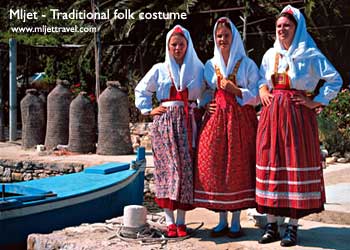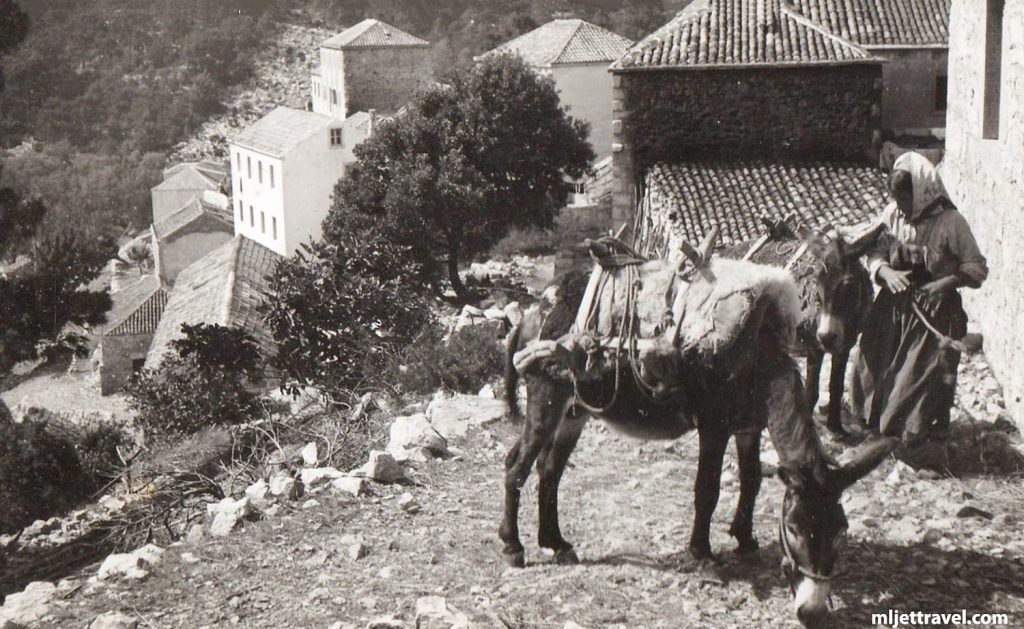History and Culture of Mljet Island

In historical times, the entire island was inhabited by the Illyrians. The Greeks, on their way to Lumbarda (island of Korcula) and other Adriatic settlements, arrived there are stayed due to bad weather. The island was also inhabited by the Romans, who left behind archaeological remnants, the most significant of which is the palace in the harbor of Polace, as well as the names of the island heights, hills, and reefs, as an unquestionable proof of their residence upon the island. Mljet is well known for its cultural heritage, its lively and bright folk costume, handicrafts by the Mljet women, the folk dances (Linđo), and the original folk music.
There are numerous cultural monuments, from the Illyrian structures and tumuli, palaces of antiquity in Polace and its old Christian basilica, the Benedictine monastery from the 12th century on the islet of St. Mary on the Large Lake (Veliko Jezero), the medieval chapels dispersed over the entire island. The many natural points of interest led to the proclamation of the western side of the island as a National park, which attracts many visitors from throughout the nation and abroad to visit the park, become acquainted with its beauty, and keep its memory forever.
The island has various names in documents from the past: de Melita, de Meleta, da Mlete, de la Melida, da Melta, da Malta, di Meleda, Melitensis, Melitae, all equally beautiful and melodious, as is the island itself. The word Melita – Melite in Greek has the same meaning as the Latin word for honey – mell, mellis. The meaning of the name of the island comes from the word for honey, as in the past, its woods were inhabited by many swarms of bees.
Those who first come to this island of wondrous beauty and pristine nature instantly fall in love with it, and always gladly return.
The island’s past recalls Odyssey and his nymph Calypso, the apostle Paul, the poet Opiana, the Roman Emperor Augustus, the German military leader Odoakra and his “comes domesticorum” Pierius, the ancient Illyrians, the Croatian-Slavic inhabitation of the island and their battles with the Roman army, the Dubrovnik nobles who ruled over the island, as did the Abbots of St. Mary and later, the Venetian knights, the fall of the Dubrovnik Republic, the arrival of Napoleon’s army and the English warships, the hundred years of Austrian rule, the first Italian occupation of the island, the rule of the anti-people’s regime under the Kingdom of Yugoslavia, the second occupation and the annexation of the island by Mussolini’s Italy from 1941 to 1943, the anti-fascist movement and the liberation of the island in 1944, and the half-century of Communist rule.
Since 1990, Mljet, together with the remaining Croatian islands has been part of the Republic of Croatia.
More info and photos:
- Traditional Mljet’s Folk Costume
- Art Gallery and Multimedia Centre ‘Stara Skula’
- Benedictine Monastery @ Mary’s islet
